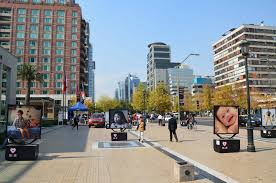How did Santiago grow throughout history?

How did Santiago grow throughout history?
How did Santiago grow throughout history? Santiago, a city rich in culture and history, has evolved through centuries. Its growth is deeply tied to political, economic, and cultural events.
The Colonial Foundation
Santiago was founded in 1541 by the Spanish conquistador Pedro de Valdivia. The city served as a key base for the Spanish colonization of Chile, and its early years were marked by battles with indigenous Mapuche people.
Economic and Agricultural Development
In the 18th and 19th centuries, Santiago’s economy grew as agriculture and trade flourished. As the hub of Chile’s central valley, it became central to the development of the nation’s agricultural exports.
Growth During Independence
Santiago became a focal point during Chile’s fight for independence from Spain. The city witnessed significant battles, and after Chile’s victory in 1818, Santiago emerged as the new nation’s capital.
Urbanization in the 19th Century
During the late 19th century, Santiago expanded rapidly. The introduction of railroads and industrialization fostered its growth, transforming it into an urban center, and increasing the city’s population substantially.
20th Century Expansion
The 20th century saw a boom in Santiago’s development. With modern infrastructure, the city became the economic and political heart of Chile, attracting people from rural areas seeking opportunities in the city.
The Impact of Allende’s Government
In the early 1970s, under President Salvador Allende, Santiago became the focal point of political and social change. The city saw increased activism, protests, and significant changes during the government’s socialist reforms.
The Pinochet Era
Following the military coup in 1973, Santiago became a center for repression under the dictatorship of General Augusto Pinochet. The military regime heavily influenced the city’s architecture, infrastructure, and political climate.
Return to Democracy and Modernization
After the return to democracy in 1990, Santiago experienced rapid modernization. It became a globalized city, boasting cutting-edge infrastructure, economic growth, and a cosmopolitan vibe, while also embracing its cultural roots.
Contemporary Santiago
Today, Santiago stands as one of Latin America’s most vibrant cities. The city has grown into a major financial hub, with its skyline dominated by skyscrapers, and offers a unique mix of modernity and tradition.
Challenges in Urbanization
Despite its rapid growth, Santiago faces challenges such as overcrowding, pollution, and inequality. These urban issues continue to affect the quality of life for many of its residents, prompting social movements and policy reforms.
Santiago’s Cultural Renaissance
In recent years, Santiago has seen a cultural renaissance. The city is home to museums, art galleries, and vibrant street art, fostering creativity and attracting international artists. It now celebrates both modern and traditional Chilean culture.
Environmental Concerns and Sustainability
Santiago is grappling with environmental concerns, particularly air pollution due to its location in a valley. Efforts have been made to improve air quality and implement sustainability initiatives to protect the city’s future.
Economic Hub of Latin America
As Chile’s economic powerhouse, Santiago plays a key role in Latin America’s financial sector. International corporations have established headquarters in the city, making it a critical hub for commerce, banking, and trade.
Public Transportation and Infrastructure
Santiago’s public transportation system, including the Metro, has greatly expanded in recent years. The city’s infrastructure continues to evolve with new roads, public spaces, and sustainable initiatives designed to accommodate its growing population.
Social Movements and Protests
Santiago has long been a center for political activism. In recent years, large-scale protests, especially those addressing inequality, education, and pensions, have shaped the political landscape of the city and the country as a whole.
The City’s Modern Global Identity
Today, Santiago projects a modern, global identity while retaining strong ties to its past. The blending of old and new architecture, its growing tech industry, and international events showcase the city’s place on the world stage.
The Role of Education and Innovation
Santiago is the educational center of Chile, home to many of the nation’s top universities. It is also a growing hub for innovation, with many startups and technology companies contributing to the city’s dynamic future.
Looking Ahead: The Future of Santiago
The future of Santiago lies in balancing growth with sustainability. With ongoing efforts to tackle social, environmental, and economic issues, the city is striving to become a more inclusive, green, and resilient metropolis in the coming years.



Leave a Reply